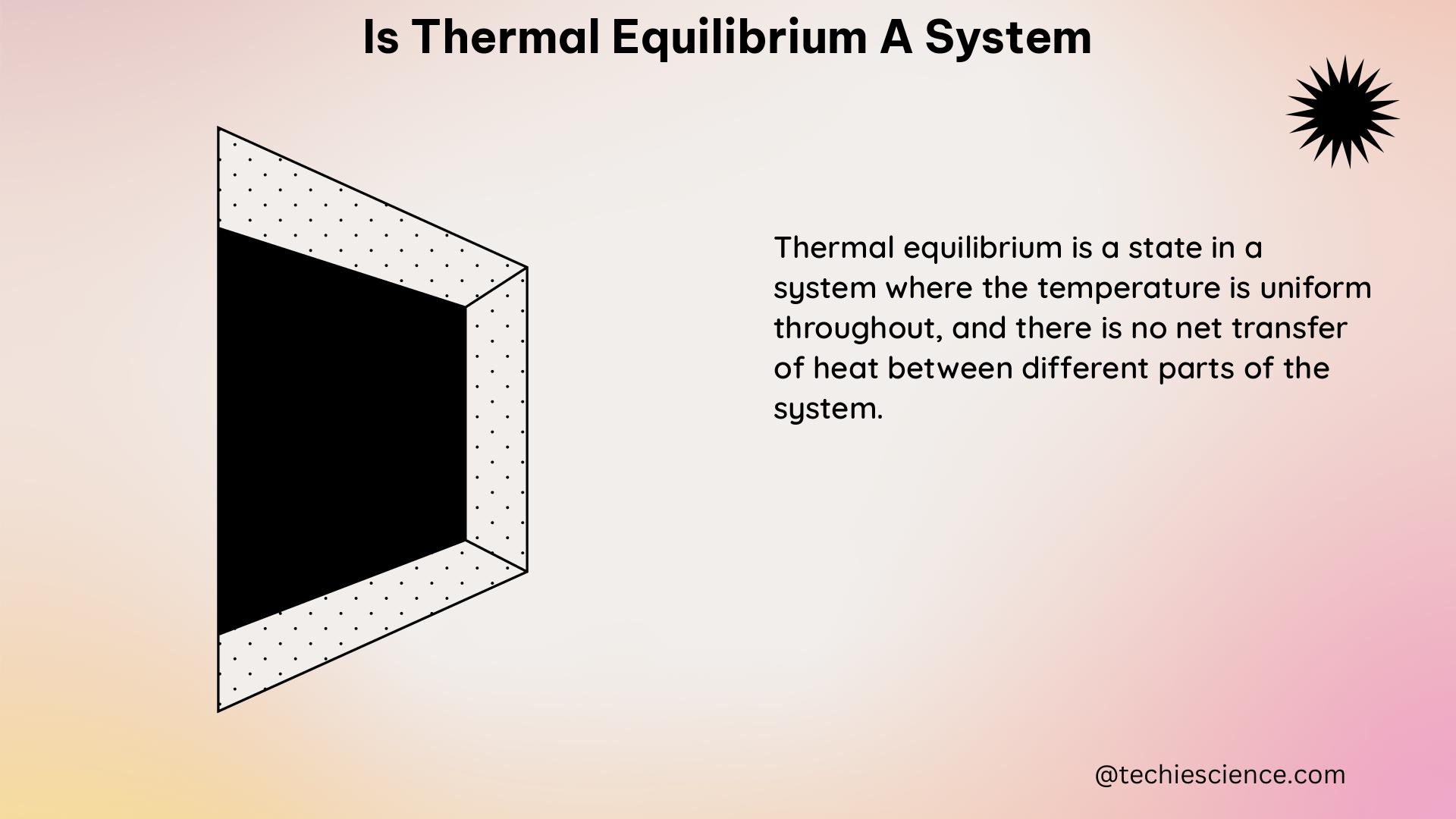Thermal equilibrium is not a system itself, but rather a state that a system can be in. In this state, two objects or systems in physical contact with each other do not exchange heat energy, meaning there is no net transfer of kinetic energy between them. This occurs when the objects or systems have the same temperature.
Understanding Thermal Equilibrium
Thermal equilibrium can be quantified through the use of the Helmholtz free energy equation, which is given by:
F = U – TS
Where:
– F is the Helmholtz free energy
– U is the internal energy
– T is the temperature
– S is the entropy of the system
This equation allows for the calculation of the maximum reversible work that can be done by a system at constant temperature and volume.
In the context of thermal equilibrium, if two systems are in contact and not exchanging heat energy, their temperatures must be the same, and their Helmholtz free energies must also be the same. This is because the Helmholtz free energy is a function of temperature and entropy, and in thermal equilibrium, the temperatures and entropies of the two systems are equal.
Examples of Thermal Equilibrium

Consider two identical boxes of matter, A and B, that are in thermal contact but initially at different temperatures. As they exchange heat energy, their temperatures will gradually equalize, and when they reach thermal equilibrium, their Helmholtz free energies will also be equal.
Numerical Problem
Calculate the Helmholtz free energy of a system with an internal energy of 50,000 joules, a temperature of 370 kelvins, and an entropy of 10 joules/kelvin.
Given:
– Internal energy (U) = 50,000 joules
– Temperature (T) = 370 kelvins
– Entropy (S) = 10 joules/kelvin
Using the Helmholtz free energy equation:
F = U – TS
F = 50,000 – (370 × 10)
F = 50,000 – 3,700
F = 46,300 joules
Therefore, the Helmholtz free energy of the system is 46,300 joules.
Importance of Thermal Equilibrium
Thermal equilibrium is a dynamic process, meaning that it is constantly being maintained through the exchange of heat energy between systems. Once thermal equilibrium is reached, it will persist as long as the systems remain in contact and no external influences cause a change in their temperatures.
Understanding thermal equilibrium is crucial in various fields, such as thermodynamics, heat transfer, and energy systems, as it helps in the analysis and optimization of these systems.
Conclusion
In summary, thermal equilibrium is not a system itself, but a state that a system can be in. It is characterized by the absence of heat exchange between systems in contact, and can be quantified through the use of the Helmholtz free energy equation. Thermal equilibrium is a dynamic process that is constantly being maintained through the exchange of heat energy between systems.
Reference:
1. Thermal Equilibrium Definition, Equation & Examples – Lesson
2. HW3 Flashcards – Quizlet
3. Thermodynamic Equilibrium – an overview | ScienceDirect Topics
Hi, I’m Akshita Mapari. I have done M.Sc. in Physics. I have worked on projects like Numerical modeling of winds and waves during cyclone, Physics of toys and mechanized thrill machines in amusement park based on Classical Mechanics. I have pursued a course on Arduino and have accomplished some mini projects on Arduino UNO. I always like to explore new zones in the field of science. I personally believe that learning is more enthusiastic when learnt with creativity. Apart from this, I like to read, travel, strumming on guitar, identifying rocks and strata, photography and playing chess.